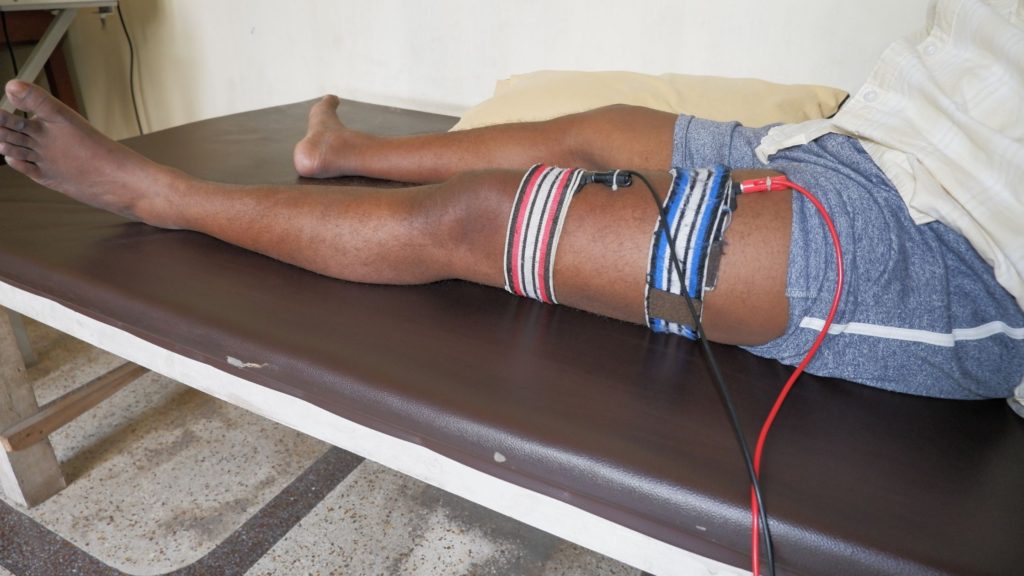Last updated on February 10th, 2025 at 10:44 am

Are you experiencing a sharp shooting pain with a pulling sensation in the back of the leg? If so, you might be suffering from sciatica. If you have been diagnosed with sciatica pain, your doctor might have warned you against lifting heavy objects and bending forward.
But do you know why? Let’s explore this in today’s article on physiosunit.com.
What is Sciatica?
Sciatica is a painful lower back condition in which the sufferer feels pain radiating along the back of the leg.
Actually, it is the path of the sciatic nerve, which runs from your lower back through your hips and buttocks and down each leg.
Here are some symptoms you might recognise:
- Sharp pain in the lower back that might shoot down your leg.
- A pulling sensation or tight feeling in your leg is often described as a ‘pulling sensation’.
- In a severe sciatica case, tingling or numbness in the leg or foot can become severe.
The Culprit: Nerve Compression
The cause of sciatica is the compression of the sciatic nerve. There are various reasons for the compression of the sciatic nerve like piriformis syndrome, lumbar anterolisthesis etc. But the most common of them is lumbar disc herniation.
I have already discussed in length and breadth of lumbar disc herniation. The disks in your spine serve a crucial role in maintaining the flexibility and stability of your back.
These structures act like cushions between the vertebrae, which are the individual bones that make up your spinal column.
The disk act like a shock absorber preventing the vertebrae from directly colliding with each other and reducing the risk of injury.
However, these disks can become compromised due to various factors, including ageing, injury, or excessive strain due to the wrong desktop ergonomics. That’s why is important to follow the perfect sitting position on computer.
Because of all these reasons the tough outer layer tears or weakens, the softer inner material can bulge outward or, in more severe cases, rupture altogether.
When the bulging or ruptured disk puts pressure on the sciatic nerve—which runs from the lower back down to the leg leading to sciatica.
Why You Shouldn’t Lift Heavy Objects:
So, why you should not lift heavy objects when you have sciatica?
Here’s what happens when you lift something heavy:
1. Increased Pressure on the Disk: When you lift heavy items, like a hefty box of books, improper posture can put extra strain on a weakened disk in your back.
For instance, if you bend forward to lift the box without using your legs, you’re not just lifting the weight of the box; you’re also increasing the pressure on your spinal disk.
2. Further Nerve Compression: The additional pressure can cause the disk material to press more against the nerve, aggravating sciatica symptoms like pain, numbness, or a tingling sensation.
Why Bending Forward is Risky:
Bending forward:
1) Disk Movement: When we bend forward, the disk slip backwards. This movement might push the herniated material further into the spinal canal, leading to or exacerbating the compression of the sciatic nerve.
If you want to learn more on how exactly bending forward affects the herniated disc I recommend reading this article: Why does Lumbar Herniated Disc Pain Increase with Bending Forward?
2) Aggravation of Symptoms: This often results in an increase in pain and discomfort due to the additional pressure on the nerve.
Safe Practices for Sciatica:
Here are some tips to manage your sciatica:
- Avoid Heavy Lifting: If you really must lift something, use proper body mechanics to lift the heavy object. Bend at your knees, not your waist, and keep your back straight. Engage your core to support your spine.
- Posture: Maintain a neutral spine position. Avoid positions that stress or pressure your back.
- Exercises: Research says that conservative management including exercises are best for disc hernia in the long term when compared to the surgery1. There are very effective exercises that help heal the herniated disc. You should also follow the sciatic nerve stretching exercises that can help ease sciatica pain almost instantly.
- Avoid flexion: Try not to do exercises that involve bending forward from the waist.
- Use lumbar corset (Low back pain belt): During sciatica pain, you should be on rest but there are times when you have to travel or simply go to your office. In such a situation, one should use the lumbar belt which helps reduce the stress on the lower back. You can use this online lumbar belt size calculator to find out what size is will be best fit for you.
For more detailed guidance on exercises beneficial for sciatica, check out our [previous articles](Link to previous relevant articles) or specific video tutorials on this topic.
Conclusion:
Understanding why certain movements should be avoided can be incredibly beneficial in managing sciatica. This also includes how you get in and get out of bed in sciatica, and how you clean your dishes in the kitchen. Remember, the goal is to reduce nerve compression, alleviate pain, and improve mobility.
The author is a physiotherapist who has been practising for the last 17 years. He holds a Bachelor's in Physiotherapy (BPT) from SVNIRTAR (Swami Vivekananda National Institute of Rehabilitation and Research), one of the prestigious physiotherapy schools in India.
Whatever he learns dealing with his patient, he shares it with the world through blogs and e-books. He also owns a YouTube channel, "Sunit Physiotherapist" with over 8 lakh active subscribers. Here, he shares everything he gets to learn serving the patient.





